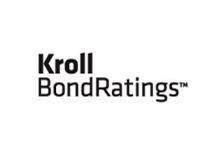Commercial real estate loans tied to a single tenant are on the rise in CMBS conduit transactions, a trend that is potentially storing up risk for this segment of the market, say investors and analysts.
Single-tenant exposures, where an entire building is leased by one company, have more than doubled in the CMBS conduit market since 2015, according to data from Kroll Bond Ratings last month.
These properties are riskier than multi-tenanted buildings because the cashflows on the lease, which ultimately pay bondholders, are reliant on a single occupant as the sole source of income.
That concentration risk can result in problems for CMBS structures, if a company’s lease on the building expires before the CMBS debt matures.
And as global companies shift their headquarters and strategies over time this is something to bear in mind, according to Jen Ripper, investment specialist at Penn Mutual Asset Management.
“You need to be aware of where the tenants are leasing and what the likelihood of them moving in the future,” she said.
“These (office) buildings are typically built to suit those companies, and depending on the layout it could be more difficult to reconfigure the property to attract new tenants.”
Single-tenant loans rose steadily from 10% of the principal balance of conduit deals in 2015 to 22.9% in the year to date, the Kroll said.
The office sector contains the most exposures, accounting for 60% of the single-tenant loans securitized last year, according to Kroll.
Leasing to a single high-quality corporate tenant can be attractive to real-estate owners looking for stable cash flows, as these kind of leases offer a “reliable bond-like income stream in many cases,” Keith Kockenmeister, senior managing director of CMBS at Kroll told IFR.
FANG EXPOSURE
Over a quarter of last year’s single-tenant loans flagged by Kroll are from technology firms such as Apple, Google, Facebook and Vadata Inc (a subsidiary of Amazon).
The growth of e-commerce has driven heavy demand for warehouse storage and last mile delivery infrastructure from companies such as Amazon, Staples and Fedex.
This has also pushed up single-name exposure in industrial loans being securitized in CMBS, according to Kockenmeister.
Single-name exposures in the industrial sector increased by 25% last year from 17.4% of overall exposures in 2017 to 22% last year, Kroll data showed.
Exposures to buildings occupied by these big tech firms account for some of the largest exposures in a handful of conduit CMBS deals sold last year, according to data from Trepp.
An US$80m loan on 181 Fremont Street in San Francisco, which is occupied entirely by Facebook and its subsidiary Instagram, accounts for almost 7% of the collateral of BMARK 2018-B4, a US$1.16bn Deutsche Bank conduit securitization sold in July last year.
An US$89m loan on a Washington D.C. office building, One Dulles Tower, which is occupied solely by Amazon Web Services, is the largest exposure in the Bank of America Merrill Lynch’s US$901m BANK 2018-BN12 conduit deal, which was sold in May last year.
Lead manager Wells Fargo bundled a US$94m loan on Apple’s Sunnyvale, California campus into another conduit deal sold earlier that year, BANK 2018-BN10. The Apple campus is the largest exposure in the US$817m collateral pool, according to Trepp data.
While these kind of flagship tenants are seen as attractive by property owners, rising single-tenant exposures can increase risk in CMBS portfolios, even if broader underwriting standards appear stable.
“Generally the CMBS loans today are fairly conservatively underwritten but you need to be aware of tail risks,” said Ripper.
